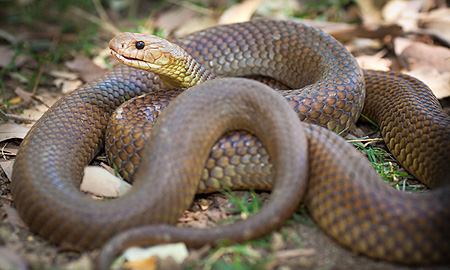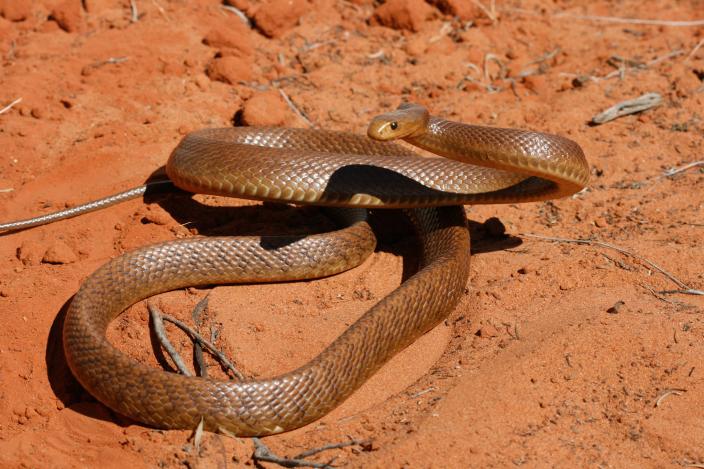Introduction
Australia, a land of varied wildlife, is home to numerous interesting creatures, including serpents that can motivate both admiration and fear. Amongst these snakes is the tiger snake, understood for its striking look and reputation as a venomous killer. Consequently, one concern often emerges: Are tiger snakes venomous? This post will explore the myths and facts bordering tiger serpents, their habitat, habits, clinical ramifications of their attacks, and much more.
Are Tiger Snakes Venomous?
When it concerns the inquiry of whether tiger snakes are venomous, the answer is a resounding yes. Tiger snakes (Notechis scutatus) are undoubtedly venomous and ranking among the most hazardous serpents in Australia. Their venom contains potent neurotoxins that can bring about paralysis and even fatality otherwise dealt with promptly.
While fatalities from tiger serpent attacks have come to be much less common as a result of innovations in medical treatment and antivenom schedule, this does not lessen the demand for caution when running into these reptiles. The possible effects of a tiger snake bite include serious discomfort at the site of the bite, swelling, nausea, problem breathing, and neurological signs and symptoms such as weak point or paralysis.
Types of Tiger Snakes
In Australia, there are numerous acknowledged subspecies of tiger serpents:
- Eastern Tiger Serpent (Notechis scutatus): Located mainly in southeastern Australia. Tasmanian Tiger Serpent (Notechis scutatus): A subspecies discovered just in Tasmania. Black Tiger Snake: Recognized for its darker coloration.
Each of these species has variations in dimension and actions however shares comparable venom characteristics.
The Habitat of Tiger Snakes
Where Do They Live?
Tiger snakes are adaptable creatures found across numerous environments throughout Australia. They typically occupy coastal areas but can also be located in wetlands, swamps, waterfronts, and forests. Their choice for moisture-rich environments makes them experienced swimmers; for this reason they grow near water bodies like lakes or marshes.
Geographical Distribution
- Southeastern Coast: Home to Eastern tiger snakes. Tasmania: Dominated by Tasmanian tiger snakes. Northern Regions: Where you may experience much less frequently seen variants.
Habitat Preferences
Tiger serpents favor locations with plentiful cover where they can conceal from killers while hunting Medical Treatment for target. They typically search tiny mammals, frogs, birds, and also fish-- making them functional hunters within their environmental niche.
The Makeup of a Tiger Snake
Physical Characteristics
Tiger snakes possess distinct physical qualities that distinguish them from various other Australian reptiles:
- Coloration: Typically grouped with yellow or light-colored stripes on a dark background. Size: They can grow up to 2 meters long; nevertheless, ordinary dimensions vary in between 1.2 to 1.5 meters.
The distinct coloration offers both as camouflage versus predators and while stalking victim in their all-natural habitat.
Behavioral Traits
Understanding the behavioral patterns of tiger serpents is critical for those living within their geographical array:
- Nocturnal Activity: They are primarily energetic in the evening yet may also hunt throughout the day. Defensive Behavior: When intimidated, tiger serpents may hiss loudly or squash their bodies-- an indication indicating they feel cornered.
Tiger Snake Bite Symptoms
If bitten by a tiger serpent, individuals need to watch for certain signs and symptoms that materialize soon after:
Severe local pain Swelling around the bite area Nausea or vomiting Difficulty breathing Neurological signs and symptoms such as muscle mass weaknessIt's critical never to underestimate these indications; instant clinical attention is vital adhering to any serpent bite incident.
First Aid for Serpent Bites
Immediate Actions After a Bite
Knowing just how to respond swiftly can conserve lives when dealing with possible serpent bites:
Stay tranquility and still-- motion boosts poison spread. Call emergency services immediately. Keep the influenced arm or leg debilitated below heart level. Avoid cutting or drawing out poison; this old better halves' tale might get worse conditions. Remove tight apparel or jewelry near the bite site.First Help Set Fundamentals for Snake Bites
A well-stocked emergency treatment package ought to consist of items specifically beneficial in dealing with serpent bites:
|Product|Purpose|| --------------------------------|-----------------------------------------------|| Clean and sterile plasters|To cover wounds|| Antibacterial wipes|To clean around bite location|| Emergency get in touch with numbers|For quick accessibility during emergency situations|| Compression plaster|To aid debilitate influenced arm or leg|

Proper prep work can make all the distinction when an emergency situation strikes.
Fact vs Myth About Tiger Snakes
Myth 1: All Snakes Are Aggressive
Contrary to usual belief, not all snake species display aggressiveness towards humans. Actually, many prefer to pull away than challenge us.
Myth 2: A Bite Always Causes Death
While deadly bites do occur-- thanks largely to postponed treatment-- most of bites are non-fatal if dealt with quickly with antivenom.
Myth 3: You Can Draw Out Venom
This widely held belief is false; trying to draw out poison just raises problems rather than alleviating them!
FAQs
1. Are infant tiger snakes extra unsafe than adults?
Baby tiger serpents may possess less venom than adults but often provide attacks without hesitation because of being more frightened.
2. For how long does it take for signs and symptoms to appear after a bite?
Symptoms normally show up within minutes however can often take hours depending upon elements like specific wellness conditions.


3. What should I do if I see a tiger snake?
Maintain range! Prevent prompting it; most encounters end without case if you appreciate their space.
4. Exists an antivenom offered for tiger snake bites?
Yes! Antivenom whip snake exists specifically formulated for dealing with diseases brought on by tiger snake attacks-- it's crucial to seek specialist clinical support immediately!
5. Can I keep a tiger snake as a pet?
Keeping any type of wild serpent species positions substantial threats due mostly to their reproduction behaviors & & nutritional demands-- it's ideal left in nature!
6. Exactly how common are serpent bites in Australia?
Australia sees hundreds of snakebite cases yearly; nevertheless fatalities have reduced significantly thanks greatly due enhanced understanding & & health care access!
Conclusion
In final thought, understanding whether "Are Tiger Snakes Venomous?" brings substantial implications for personal safety when connecting with these remarkable reptiles belonging to Australia's varied ecological communities can not be overemphasized!
Arming ourselves with expertise about these creatures-- from their habitats and actions down through reliable emergency treatment techniques-- empowers us toward more secure conjunction together with wild animals while mitigating threats related to unintended encounters!
By fostering click here education regarding our atmosphere's details-- not just focusing solely on fear-- we lead pathways towards much better recognition & & conservation initiatives benefiting both humanity & & nature alike!